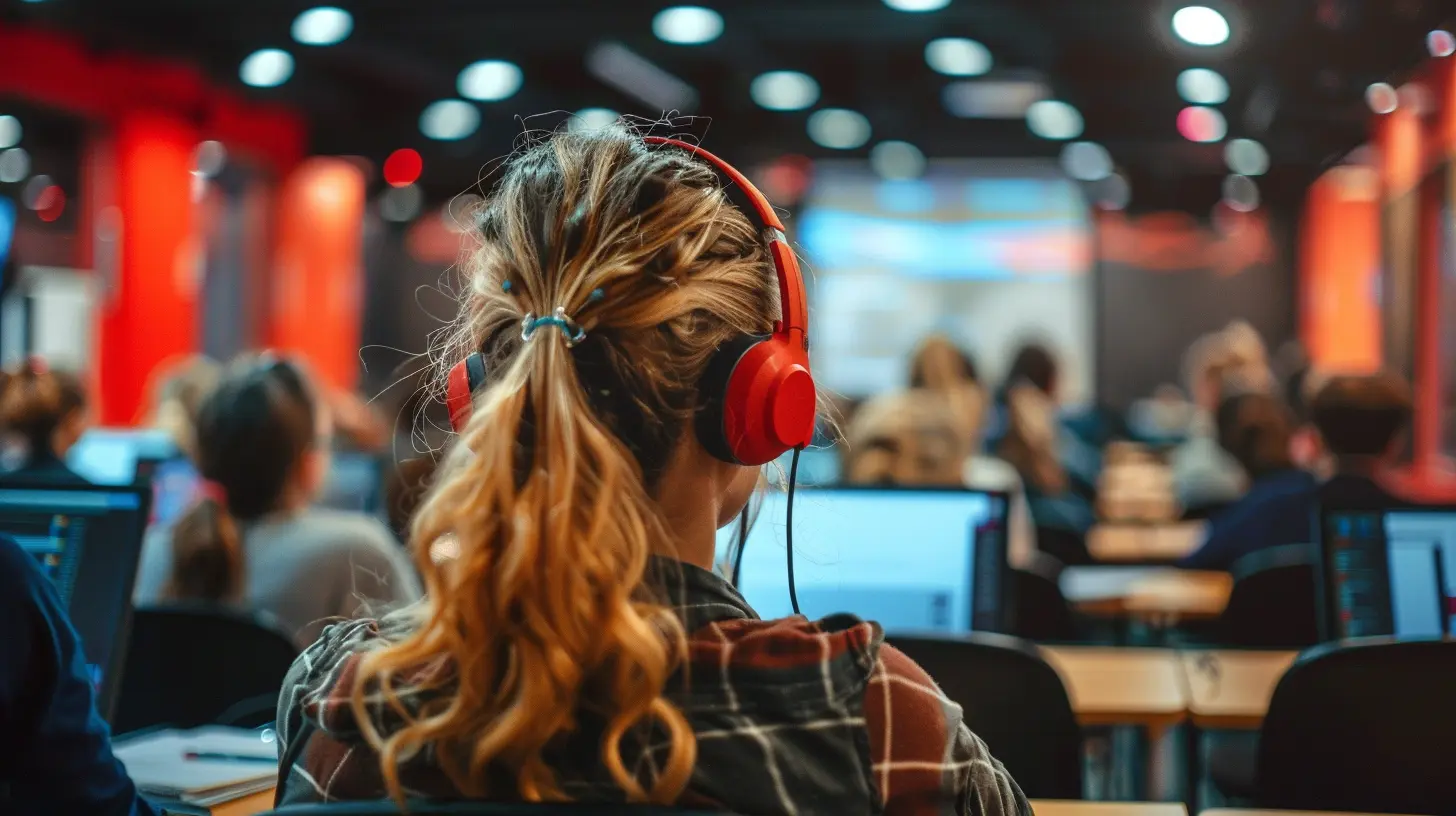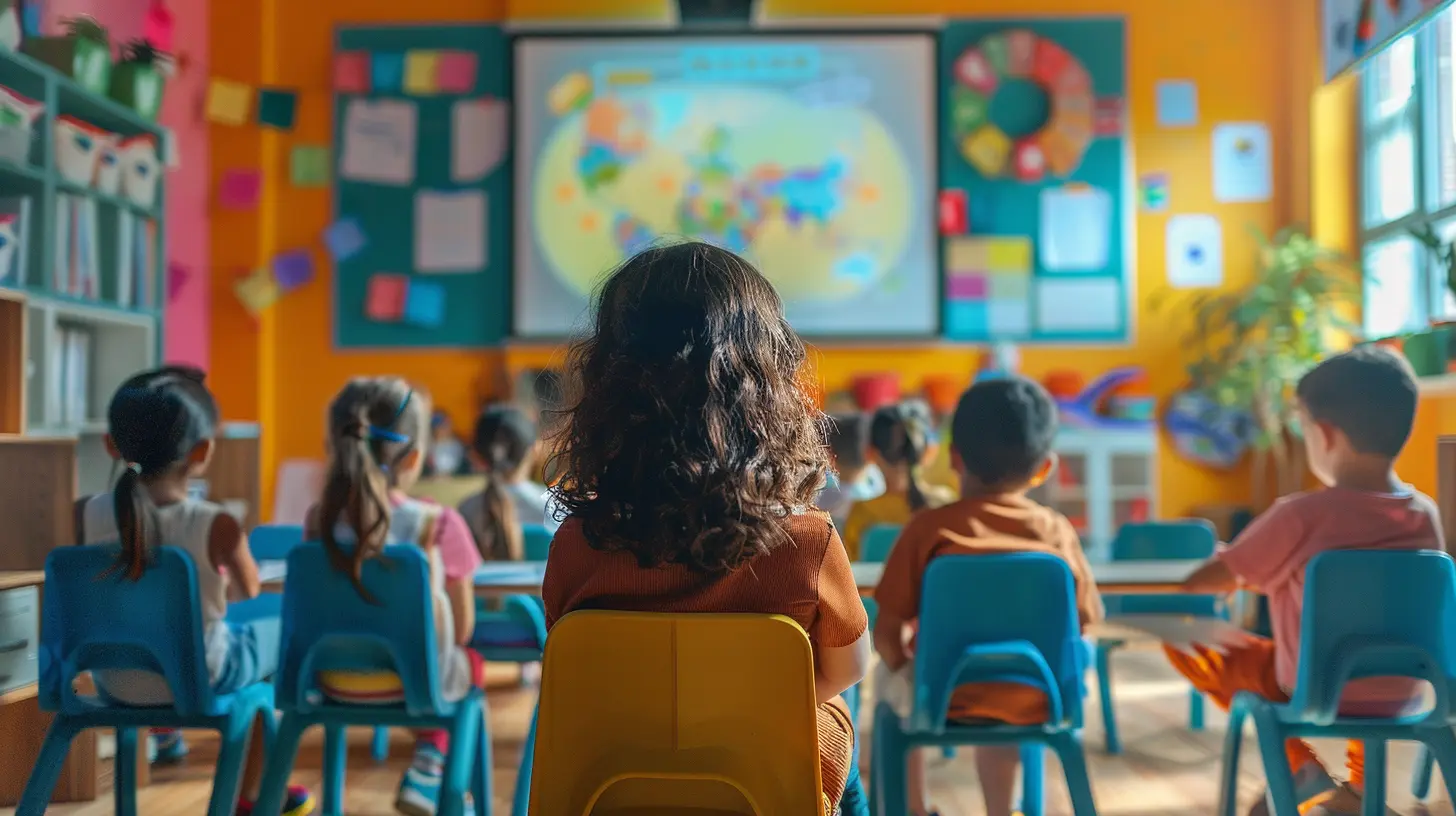Flipped Classroom: Reducing Teacher Burnout by Shifting Focus
31 May 2025
Teaching is a fulfilling profession, right? But let’s be honest — it can also be downright exhausting. With lesson planning, grading, and trying to keep students engaged, it’s easy for teachers to burn out. Enter the flipped classroom, a teaching model that’s not just a trend but a game-changer. How? By shifting the focus of classroom time and giving teachers a break from the traditional grind. Let’s dive in and see how this innovative approach can help reduce teacher burnout while keeping students more engaged than ever.

What is a Flipped Classroom?
Before we explore how it reduces burnout, let’s clarify what a flipped classroom is. Imagine you’re a teacher standing at the front of the room, lecturing for 45 minutes straight while your students sit passively (some probably daydreaming). In this traditional setup, most of the learning happens in class, and students go home to tackle their homework and practice problems alone.Now, flip that.
In a flipped classroom, students are introduced to new content at home — usually through videos, readings, or other interactive resources. Classroom time is then dedicated to active learning: discussions, problem-solving, and applying the concepts they learned at home. In other words, the lecture becomes homework, and class time is used for hands-on, collaborative work. It’s like flipping a pancake: the content is the same, but the order is reversed.
Why Flip the Classroom?
At first glance, flipping the classroom might sound like more work for the teacher. After all, you’re creating or curating video lectures or reading materials for students to access outside of class. But here’s the kicker: once those resources are created, your in-class workload decreases significantly. The classroom becomes a place for interaction, not just instruction. You’re no longer talking AT students for an entire period; you’re working WITH them.This shift in focus can have a profound impact on reducing teacher burnout. Let’s break down how.

How the Flipped Classroom Reduces Teacher Burnout
1. Less Repetition, More Engagement
Let’s be real — how many times have you given the same lecture on photosynthesis or the Pythagorean theorem? Repeating the same material year after year can be monotonous. It’s like being stuck on an educational hamster wheel. The flipped classroom allows you to record a lecture once and let students watch it at their own pace. You don’t need to repeat yourself endlessly.This frees you up to focus on the fun part: engaging with students. You now have time to answer questions, dive deeper into topics, and facilitate group work. You’re not just a talking head; you’re an active participant in the learning process. This change in role can reignite your passion for teaching, helping to stave off burnout.
2. Personalized Learning Without Extra Effort
Every classroom has a range of learners. Some students grasp concepts in minutes, while others need more time to process. In a traditional setup, it’s tough to cater to everyone’s needs without feeling like you’re leaving someone behind. The flipped classroom allows students to learn at their own pace. They can pause, rewind, and rewatch videos as needed — something you can’t do in a live lecture.This self-paced learning means less pressure on you to constantly differentiate instruction. Instead of running yourself ragged trying to meet the individual needs of 30+ students, you can walk around the class, offering personalized support where it’s most needed. You become more of a guide, less of a taskmaster, and that shift can do wonders for your mental health.
3. More Time for Collaboration and Creativity
In a flipped classroom, students come to class already familiar with the material, which opens the door for creative, collaborative activities. Think of it like prepping ingredients before cooking — when everything is ready, you can focus on making a delicious dish.When students arrive with a baseline understanding, you can orchestrate debates, group projects, or hands-on experiments. These activities are not only more engaging for students but also more fulfilling for you as a teacher. Instead of standing in front of a board, you get to facilitate lively discussions and witness those “aha” moments firsthand. It’s a win-win: you’re less stressed, and students are more engaged.
4. Reduced Grading Stress
Grading is one of the biggest culprits of teacher burnout. Hours upon hours spent marking papers can feel like an endless slog. But here’s the thing — in a flipped classroom, much of the “homework” is done in class, under your supervision. You can provide immediate feedback, helping students correct mistakes on the spot rather than after the fact.Additionally, many flipped classrooms incorporate formative assessments (like quizzes or exit tickets) that are quick and easy to grade, often using technology that does the heavy lifting for you. This reduces the mountain of grading at home, giving you back precious hours of your personal time. And let’s face it, who doesn’t want more time for Netflix or a good book?

Challenges of Flipping the Classroom (And How to Overcome Them)
Of course, no teaching strategy is a magic bullet. The flipped classroom isn’t without its challenges, but they’re manageable with the right approach.1. Student Accountability
One common concern with flipped classrooms is whether students will actually do the pre-class work. Let’s be honest, some students will inevitably skip the video or reading, hoping to coast through the class.But here’s the thing — the flipped classroom model allows you to quickly identify who hasn’t done the prep work. With interactive quizzes or discussion boards, you can hold students accountable and ensure they’re engaging with the material. Plus, when students realize that class time is dedicated to applying what they’ve learned, they’re more likely to come prepared. Nobody likes feeling lost in a group activity.
2. Technology Access
Another hurdle some teachers face is ensuring all students have access to the necessary technology. Not every student has a reliable internet connection or a device to watch videos at home. This is a legitimate concern, but it’s not a dealbreaker.You can overcome this by offering alternative ways to access the material. For example, you can provide downloadable PDFs or even allow students to watch the videos during free periods at school. Some teachers even offer a “flipped classroom lite” where students complete the at-home work during the first few minutes of class.
3. Initial Setup Time
Yes, flipping your classroom requires upfront work. Creating or finding high-quality videos and resources takes time, and that can feel daunting when you’re already stretched thin. But remember, this is a one-time investment that will pay off in spades. Once you have your materials set up, you can reuse them year after year, tweaking and improving as needed.In the long run, the time you save during the school year will more than make up for the initial effort. And let’s not forget — there are countless free resources available online, like Khan Academy or TED-Ed, which can save you time.

Tips to Get Started with Flipping Your Classroom
So, you’re sold on the idea of flipping your classroom, but where do you start? Here are some tips to ease the transition.1. Start Small
You don’t have to flip your entire curriculum overnight. Start with one lesson or unit and see how it goes. This will allow you to work out the kinks and get comfortable with the format before committing to a larger overhaul.2. Use Existing Resources
Don’t reinvent the wheel. There are tons of high-quality, free resources available online. Websites like Khan Academy, YouTube, and Edpuzzle offer videos on just about any topic you can think of. Curate content that aligns with your curriculum rather than creating everything from scratch.3. Communicate with Parents and Students
Make sure students and parents understand the flipped classroom model and its benefits. Some may initially resist the change, especially if they’re used to traditional lectures. Clearly explain that this approach will give students more personalized support and make classroom time more engaging.4. Use Technology Wisely
There are plenty of tools that can make flipping your classroom easier. Google Classroom, Edmodo, and Schoology are great platforms for sharing videos and assignments with students. They also allow you to track who has completed the work and provide feedback in real-time.Conclusion: A Sustainable Future for Teachers
In an era where teacher burnout is becoming increasingly common, the flipped classroom offers a refreshing alternative. By shifting the focus of classroom time from passive lectures to active learning, you can reduce your workload, personalize instruction, and make teaching more enjoyable.Is the flipped classroom a cure-all? Of course not. But it’s a step in the right direction toward creating a more sustainable and fulfilling teaching experience. So, why not give it a try? Flip the script, and you might just find yourself falling back in love with teaching.
all images in this post were generated using AI tools
Category:
Flipped ClassroomAuthor:

Eva Barker
Discussion
rate this article
3 comments
Astralis Cox
The flipped classroom model empowers educators by reallocating their energy toward meaningful interactions and active learning, ultimately fostering a more engaging environment that mitigates burnout and enhances both teaching effectiveness and student involvement.
June 20, 2025 at 3:21 AM

Eva Barker
Thank you for your insightful comment! I completely agree that the flipped classroom model not only enhances student engagement but also allows educators to focus on impactful interactions, helping to reduce burnout.
Henry Bellamy
This article effectively highlights how the flipped classroom model can alleviate teacher burnout by empowering educators to engage students actively, enhancing both teaching and learning experiences.
June 5, 2025 at 12:49 PM

Eva Barker
Thank you for your insightful comment! I'm glad you found the article's emphasis on the flipped classroom model and its positive impact on teacher empowerment and student engagement valuable.
Whitney Flores
Love the flipped classroom idea! It’s a fantastic way to freshen up teaching and lighten the load—let's keep the enthusiasm alive!
June 1, 2025 at 2:58 AM

Eva Barker
Thank you! I’m glad you share the enthusiasm for the flipped classroom approach—it truly has the potential to invigorate both teaching and learning!



